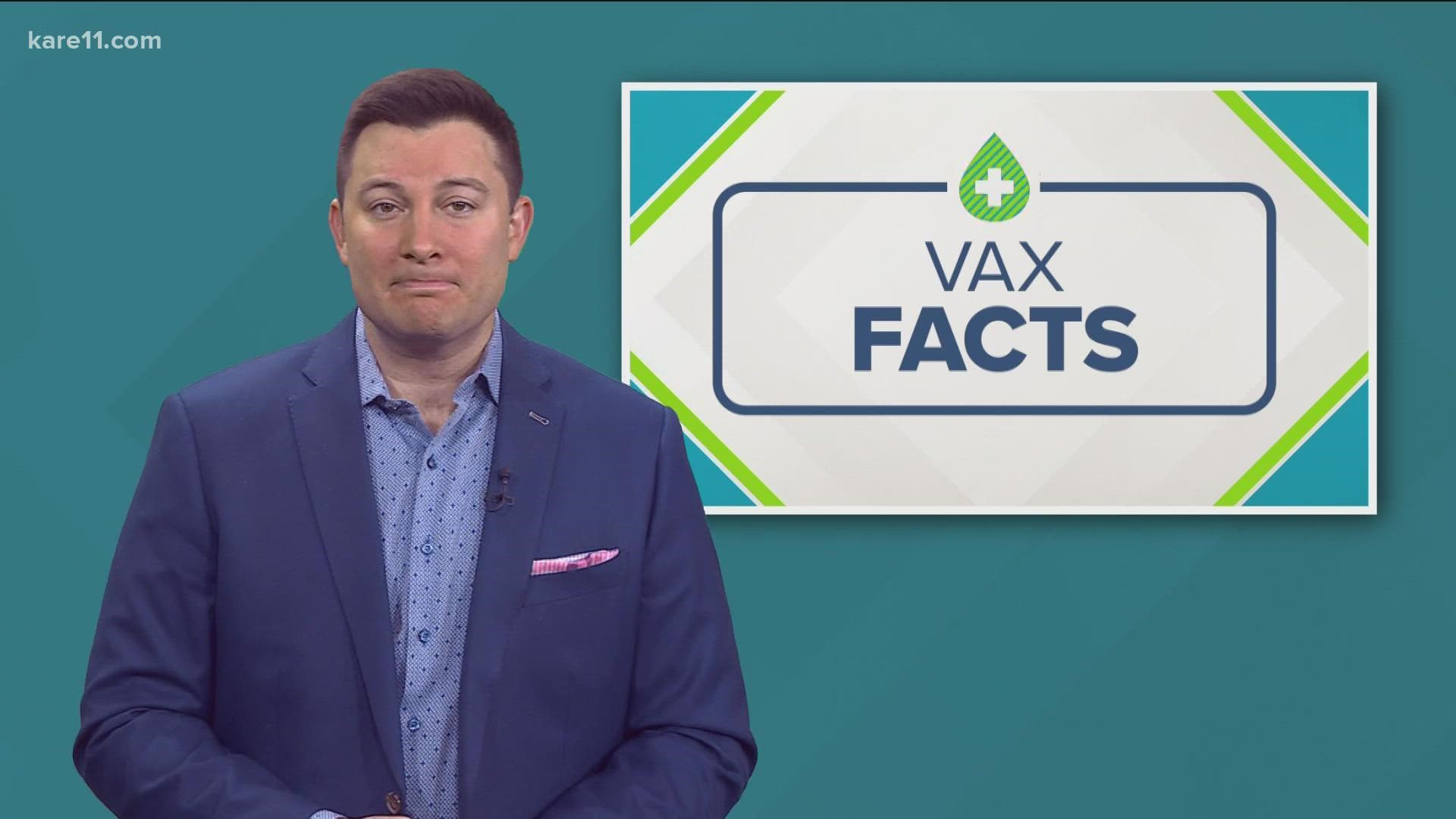MINNEAPOLIS — Your immune system has a memory – kind of like your brain's memory.
"The way I explain it to people, the first time you meet somebody, you may or may not remember them," said Dr. Abinash Virk, Infectious Disease Specialist with the Mayo Clinic. "The second time you meet them, you are more likely to remember their name because you remember something about them."
However you first shake hands with the virus – whether through infection or through the vaccine – your body produces B cells that start pumping out antibodies.
So for weeks or months, your antibodies are all over the place. They are abundant and ready to take on the virus. Over time, the antibodies drop off. Research has shown that to be about 6 months after you get the COVID-19 vaccine.
With nothing to fight off, your body switches into back-up mode just so it knows what worked against the virus in the past.
First part of the backup system is called memory B cells. They act like hall monitors – surveying your blood for COVID bad guys potentially for decades. The other backup part is plasma cells – they hang out in your bone marrow – they too make antibodies at low levels, again often for decades.
Now, come the booster shots.
When you get it, the engine starts again. The memory B cells make another supply of multi-month antibodies.
But something else pretty cool happens.
Your system also makes another batch of those back-up mode cells – those memory B and plasma cells.
"There's evidence that the more times you are exposed to the antigen, the more likely you are to make these really long lived plasma cells," said Marc Jenkins, Director of Immunology at the University of Minnesota Medical School.
Meaning, your long term protection gets better, and can respond even quicker should you meet the virus again.

